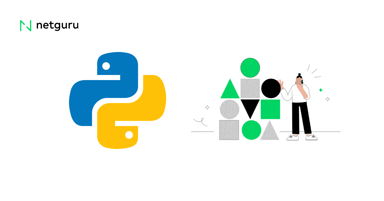Python vs. R for Machine Learning

Python and R share many characteristics. They're the two most popular tools used by data scientists. They're both open-source and free. But while Python was designed as a general-purpose programming language, R was developed for statistical analysis.
Read on to find out what are the pros and cons of Python or R for projects that take advantage of machine learning.
Python
Developed in the late 1980s, Python has gathered a sizable community of enthusiasts and has been used in applications such as YouTube, Dropbox, Quora, and Instagram. Python also plays an instrumental role in powering Google’s internal infrastructure.
But how does Python perform in machine learning projects?
Pros
-
It's a general-purpose programming language – Python is a better choice if your project requires more than just statistics (for example, building a functional website).
-
Gentle learning curve – Python is very accessible and easy to learn, which means you'll be able to find skilled developers for your project quickly.
-
Full of useful libraries – Python boasts a high number of libraries for data munging, manipulation, collection, and machine learning. For example, Scikit-learn contains tools for data mining and analysis that boost Python's excellent machine learning usability. Another package called Pandas offers developers high-performance structures and data analysis tools, which helps shorten the development time. And if your development team needs one of R's major functionalities, RPy2 is the right package.
-
Better integration – generally, Python integrates better than R in engineering environments. Even if developers take advantage of a lower-level language such as C, C++, or Java, providing it with a Python wrapper allows better integration with other components. Also: a Python-based stack can easily integrate the work of data scientists, bringing it smoothly into production.
-
High productivity – Python's syntax is highly readable and similar to other programming languages, whereas the syntax of R is different. Python's readability ensures high productivity of development teams. Using R's non-standard syntax, you risk disruptions in the programming process.
Cons
-
It includes fewer statistical model packages.
-
Threading is tricky - due to the Global Interpreter Lock (GIL), threading can be quite problematic in Python. As a result, multi-threaded CPU-bound applications might be slower than single-threaded ones. A machine learning project would benefit more from implementing multiprocessing instead of multithreaded software.
When to use it?
Python is widely used throughout the industry and enables easy collaboration within development teams. If you need a flexible, multi-purpose programming language surrounded by a large community of developers and extendable with machine learning packages, Python is a top pick.
R
R was built by statisticians, for statisticians – and most developers can tell that by looking at its particular syntax. Since the mathematical computations involved in machine learning are derived from statistics, R comes in handy to those who want to gain a better understanding of the underlying details and build something truly innovative.
What about R for machine learning projects?
Pros
-
Perfect for data analytics or visualization – if these are at the core of your project, R is an excellent choice. It allows rapid prototyping and working with datasets to build machine learning models.
-
It includes a wealth of libraries and tools – just like Python, R has plenty of packages that improve its performance in machine learning projects. For example, Caret gives a boost to R's machine learning capabilities with its set of functions that make creating predictive models more efficient. R developers can take advantage of advanced data analysis packages that cover the pre-modeling, modeling, and post-modeling stages, and are directed at specific tasks such as model validation or data visualisation. The ecosystem of statistical model packages for R is more extensive than in Python.
-
Good for exploratory work – if you're at the early stages of your project and require exploratory work in statistical models, R makes it easier to write them than Python – developers need just a few lines of code.
Cons
-
Steep learning curve – there's no denying that R is a challenging language and you'll find fewer developers who are expert at it when building your project team.
-
Inconsistency – since in R algorithms come from third parties, you might end up with many inconsistencies. Every time your development team uses a new algorithm, they will also need to learn new ways to model data and make predictions. Similarly, every new package requires learning. And R's documentation often doesn’t help much. All these factors have a negative impact on development speed.
When to use it?
If your project is statistics-heavy, R is a better candidate for the task. R is also an excellent choice for narrow problems that require a one-time dive into a dataset. For example, if you'd like to analyse a corpus of text by deconstructing paragraphs into words or phrases and identifying patterns, R is a top pick.
Python or R?
When it comes to machine learning projects, both Python and R have their advantages. Thanks to the extensive availability of packages, the majority of the common tasks associated with one of these languages are doable in both.
Still, Python performs better in data manipulation and repetitive tasks – and it's definitely the right choice if you're planning to build a digital product based on machine learning. However, if you're at the early stages of your project and need to develop a tool for ad-hoc analysis and dataset exploration, pick R - unless you already have a team which is well-versed in Python.














-873149-edited.jpg?width=50&height=50&name=Tomaszuk%20Daniel%201%20(2)-873149-edited.jpg)





